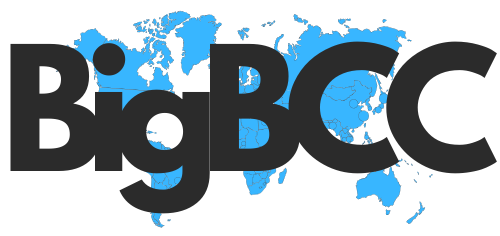According to Renub Research Latest Report canned food market is projected to grow from US$ 125.46 billion in 2024 to US$ 179.65 billion by 2033, registering a CAGR of 4.07% between 2025 and 2033. This steady growth is fueled by emerging consumer needs for convenience, longer-lasting food solutions, and the increasing trend of meal prepping, positioning canned foods as a staple in households worldwide.
Canned foods offer ease of storage, affordability, and versatility, making them indispensable for busy urban households, emergency preparedness, and sustainable food practices. Leading players like Nestlé, Del Monte Foods, Campbell Soup Company, Bonduelle, and Thai Union Group are innovating with organic products, premium ready meals, and eco-friendly packaging to meet evolving consumer demands.
Global Canned Food Market Overview
Canned food refers to items preserved by sealing them in airtight containers, typically metal cans, and sterilizing through heat to kill bacteria and enzymes. Since its invention in the early 19th century, this method has become a household staple globally.
Canned foods are widely consumed due to their convenience, extended shelf life, and simplicity in storage. They are commonly added to meals such as stews, casseroles, and soups or consumed as standalone items. The affordability, availability, and long-term storability make canned foods vital during emergencies, disasters, and supply chain disruptions, ensuring consistent demand across regions.
👉 Want to explore detailed market trends, segment insights, and forecasts? 🔗 Request Sample Report
Key Drivers of Canned Food Market Growth
1. Rising Demand for Convenient Foods
Urbanization, busy lifestyles, and increased female workforce participation have driven the need for ready-to-eat, convenient meal solutions. Canned foods meet this demand due to long shelf life, easy storage, and quick preparation.
Companies are innovating with portion-sized meals, value-added packaging, and nutrient-rich offerings. For instance, Nestlé’s Vital Pursuit frozen meal range targets weight loss and health-conscious consumers, reflecting how convenience and health trends converge in the canned food sector.
2. Shelf Life and Food Security
Canned foods provide reliable preservation, reduced spoilage, and extended usability, making them essential for food security and emergency rations. Governments, NGOs, and disaster relief organizations often rely on canned goods due to their durability and long shelf life.
Emerging solutions such as Red Planet’s 25-year shelf-life ready-to-eat meals showcase innovation in freeze-drying technology and preservative-free solutions, aimed at humanitarian aid, military, and even space travel. Such developments highlight the strategic importance of canned food in global food security initiatives.
3. Variety and Premiumization
The canned food industry has evolved from basic staples to premium, organic, and gourmet products. Consumers are increasingly health-conscious, seeking low-sodium, preservative-free, and nutrient-rich canned foods.
Premium offerings, such as gourmet seafood and plant-based ready meals, have gained traction, particularly in developed economies. Social media has further amplified consumer awareness and trends, driving demand among millennials and Gen Z who associate canned foods with convenience and lifestyle benefits.
Challenges Facing the Canned Food Industry
1. Health Perceptions
Despite improvements in ingredients and packaging, some consumers perceive canned foods as less healthy compared to fresh or frozen alternatives. Concerns about high sodium content, preservatives, and BPA contamination persist.
Addressing this stigma requires transparent labeling, consumer education, and investment in healthier canned options. Products such as BPA-free cans and nutrient-preserving technologies are increasingly popular among health-conscious consumers.
2. Sustainability Concerns
Canned food production is energy-intensive and material-heavy, relying on aluminum and steel, which raises environmental concerns. Recycling rates vary globally, and packaging sustainability is becoming a critical factor in consumer purchasing decisions.
Companies adopting eco-friendly manufacturing, recyclable packaging, and sustainable sourcing are more likely to gain consumer trust and market share.
👉 For deeper analysis, detailed segment data, and company insights: 🔗 Request Customization Report
By Product Type:
Canned Meat and Seafood: Driven by protein demand and convenience. Tuna, salmon, sardines, and chicken are popular globally. Sustainability in sourcing is critical due to overfishing concerns.
Canned Fruit and Vegetables: Offers nutritional convenience, long shelf life, and reduced food waste.
Canned Ready Meals: Popular among urban consumers seeking affordable, convenient, and nutrient-rich meals. Technology advances preserve flavor and freshness.
Others: Includes soups, pulses, and specialty foods.
By Type:
Organic: Strong growth due to chemical-free, healthy options, especially in U.S. and Europe.
Conventional: Widely available and cost-effective, dominant in emerging economies.
By Distribution Channel:
Supermarkets and Hypermarkets: Key for mass-market distribution and brand visibility.
Convenience Stores: Serve urban, fast-paced consumers; smaller packages and impulse purchases.
E-commerce: Fast-growing channel, offering premium and foreign canned foods, bulk buying options, and subscription models.
Regional Market Outlook
United States
The U.S. canned food market is mature but expanding, driven by demand for organic, premium, and sustainable products. Retail channels including supermarkets, convenience stores, and online platforms are key drivers. Awareness about food waste reduction further supports market growth. However, competition from fresh and frozen alternatives remains high.
France
France’s market is influenced by gastronomic traditions and premium product demand. Consumers prefer organic and gourmet canned foods, with supermarkets and online retailers driving availability. Manufacturers are responding with high-quality, health-focused offerings, such as ACCRO’s pea, wheat, and bean protein products graded A or B by Nutriscore.
India
The Indian canned food market is growing rapidly due to urbanization, rising incomes, and exposure to global cuisine. Demand is driven by ready meals, seafood, and canned fruits, especially among working professionals and youth. Online platforms aid in accessibility, though cultural preference for fresh food limits adoption. Acquisitions like Agro Tech Foods acquiring Del Monte Foods Private Limited reflect market consolidation and expansion strategies.
Brazil
Brazil’s market benefits from urbanization, rising middle-class incomes, and demand for affordable protein sources. Popular products include canned meat and seafood, with supermarkets and convenience stores as key channels. E-commerce is an emerging growth driver. Challenges include economic instability and raw material import dependency.
Saudi Arabia
Saudi Arabia’s canned food market is growing due to urbanization, female workforce participation, and demand for convenience meals. Popular categories include ready meals, seafood, and meat. Retail expansion and online channels support growth, but cultural preferences for fresh food and preservative sensitivity remain challenges.
Key Players
Leading players driving innovation and market growth include:
Ayam Sarl
Bonduelle
Campbell Soup Company
CHB Group
Danish Crown AmbA
Del Monte Foods Inc.
Nestlé S.A.
Thai Union Group PCL
The Bolton Group
These companies focus on premium offerings, organic products, sustainable packaging, and global expansion, strengthening their competitive position.
Market Outlook
The global canned food market is expected to witness steady growth, fueled by:
Rising demand for convenient, ready-to-eat meals
Longer shelf life addressing food security and supply chain stability
Premiumization and organic food trends
Expansion of e-commerce and modern retail channels
Regional growth in Asia-Pacific and Middle East markets
While challenges related to health perceptions and environmental sustainability remain, innovation, transparent labeling, and eco-friendly practices are expected to propel long-term growth.
Canned food is evolving beyond a basic pantry staple, becoming a premium, health-conscious, and globally accessible food category. With continued investment in product diversification, sustainability, and digital distribution, the sector is poised for strong global growth through 2033.
Note: If you need details, data, or insights not covered in this report, we are glad to assist. Through our customization service, we will collect and deliver the information you require, tailored to your specific needs. Share your requirements with us, and we will update the report to align with your expectations.









